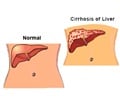Most people realize that too much alcohol can lead to multiple health problems, injuries and violence.
Most people realize that too much alcohol can lead to multiple health problems, injuries and violence. Numerous statistics support the accuracy of this perception. Many people also assume that a substantial proportion of people who drink to excess are probably alcoholics. This may not be accurate. A recent study of the general population in New Mexico reveals that, in fact, most alcohol-related problems may be due to excessive drinking – especially binge drinking – among persons who are not alcoholics.
"In the period following prohibition, most researchers, policy makers, and the general public tended to define excessive drinking in terms of alcohol dependence or alcoholism," explained Jim Roeber, an alcohol epidemiologist with the New Mexico Department of Health and corresponding author for the study. "This was likely related to cultural norms that sanctioned all but the most obviously problematic drinking such as alcoholism. More recently, researchers and policy makers have … extended the definition of excessive drinking to encompass other behaviors such as binge drinking (consuming five or more drinks at one time) and impaired driving, and to address other problems such as alcohol-related injuries and social harm.""The reality," added Tim Naimi, a physician with the Alcohol Team at the Centers for Disease Control & Prevention, "is that drinking to the point of intoxication or drinking above national guidelines with respect to average consumption also carries significant risks, and is unfortunately quite common. Although there are many effective policy and clinical interventions to address excessive drinking, many of them have not been implemented or are underutilized."
For this study, researchers examined data from the 2002 Behavioral Risk Factor Surveillance System in New Mexico, an annual telephone survey that provides state-level estimates of the prevalence of various health-related risk behaviors and outcomes. Study authors assessed the prevalence of "excessive drinking," defined to include: binge drinking, heavy drinking, alcohol-impaired driving, and alcohol dependence.
"We found that in New Mexico, most excessive drinkers are not alcohol dependent," said Roeber, "and that binge drinking is the most prevalent form of excessive drinking." More specifically, 16.5 percent of 4,761 New Mexico adults were considered "excessive drinkers," but only 1.8 percent of them met criteria for alcohol dependence.
"The downside of the assumption that alcohol dependence is the predominant form of excessive drinking is that prevention resources have tended to be directed toward treatment of alcohol dependence," said Roeber, "rather than prevention of more prevalent forms that are responsible for a large proportion of alcohol-related problems." He added that, at least in New Mexico, "alcohol-related prevention efforts should be broadened to focus on other forms of excessive drinking in addition to alcohol dependence, especially binge drinking."
Naimi wholeheartedly concurs. "In order to prevent most alcohol-related problems, including alcoholism itself, we need to focus on excessive drinking, not just alcoholism," he said. "Focusing exclusively on alcoholism will identify only a small percentage of those at risk of causing or incurring alcohol-related harms, precludes the possibility of prevention, and is very costly, at least on a per-person basis."
Advertisement
SRM








